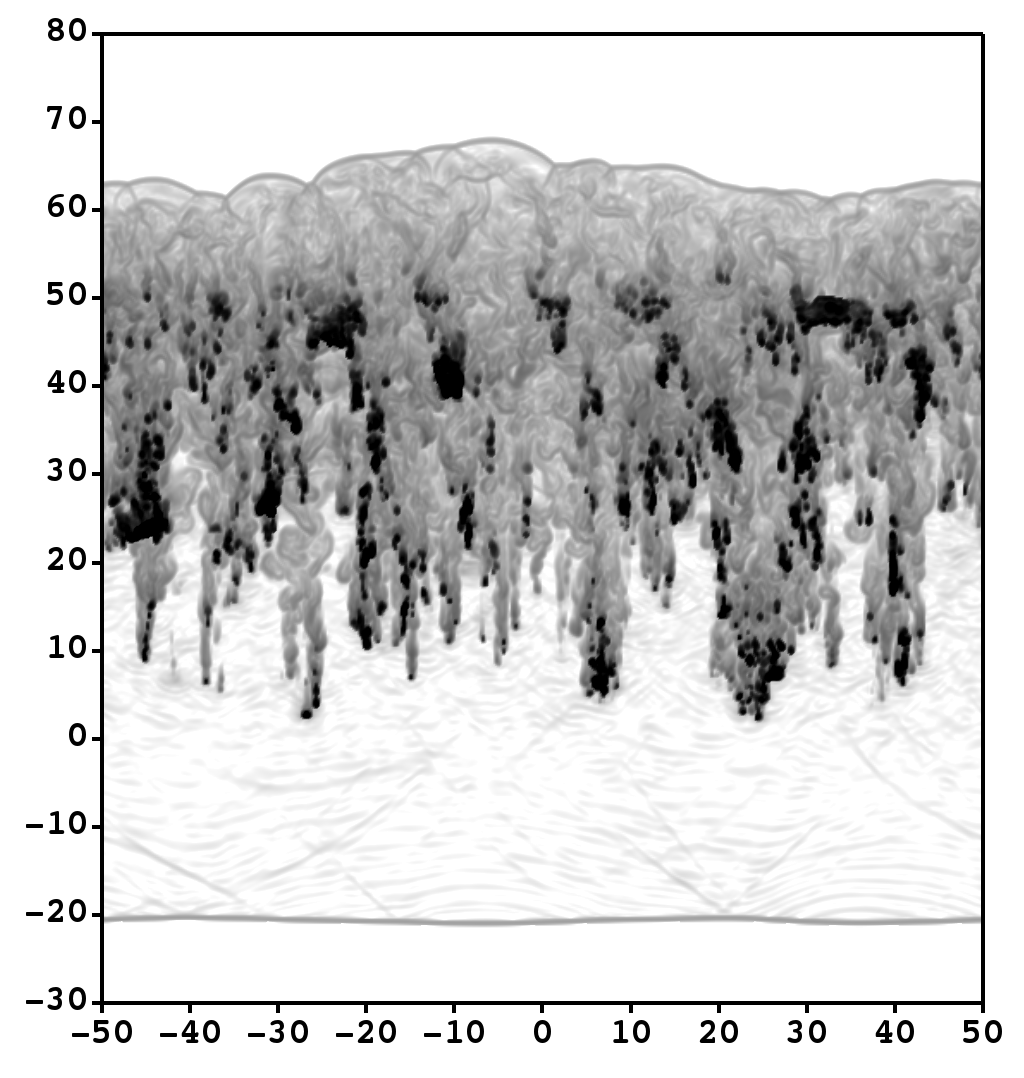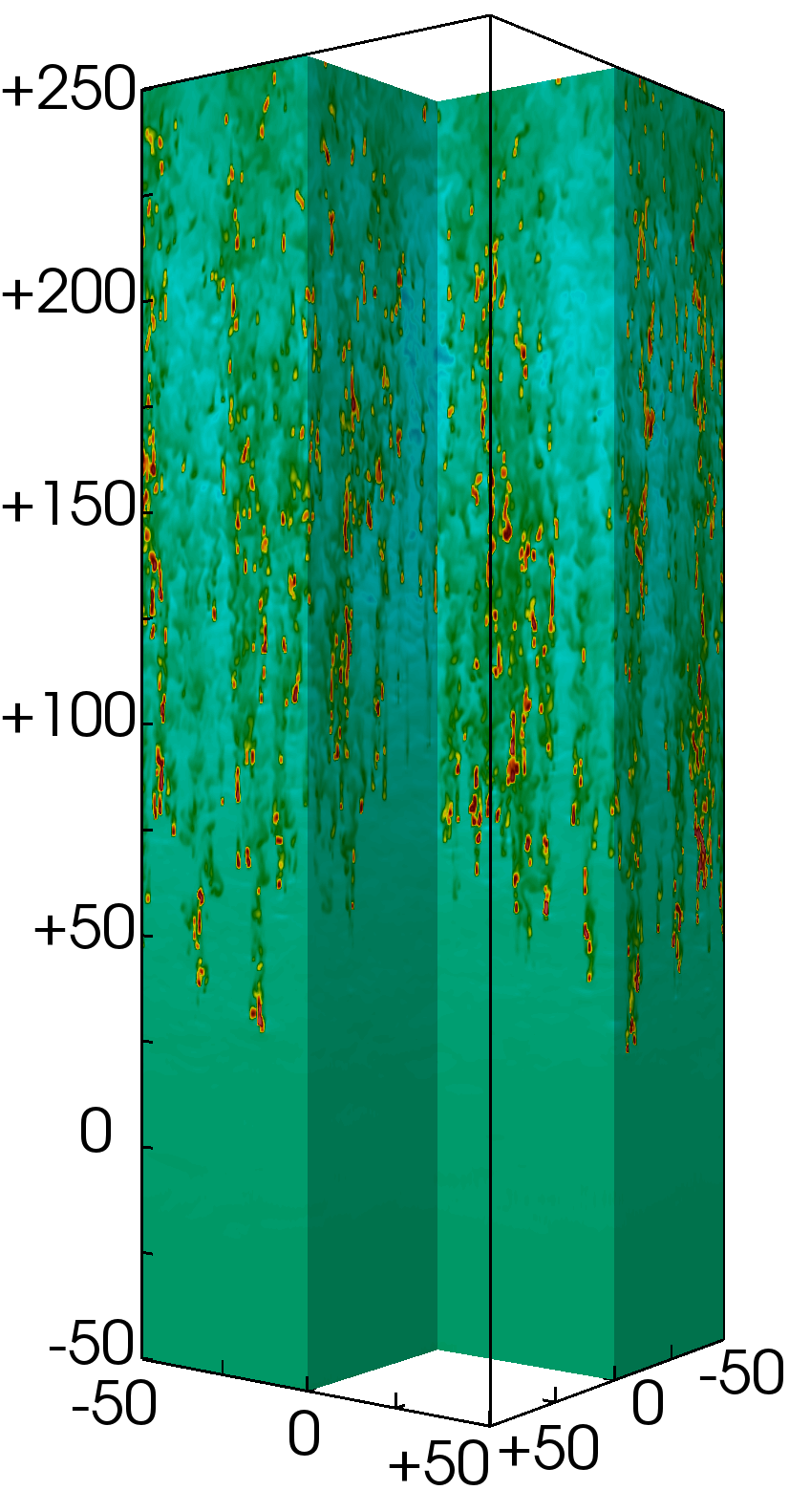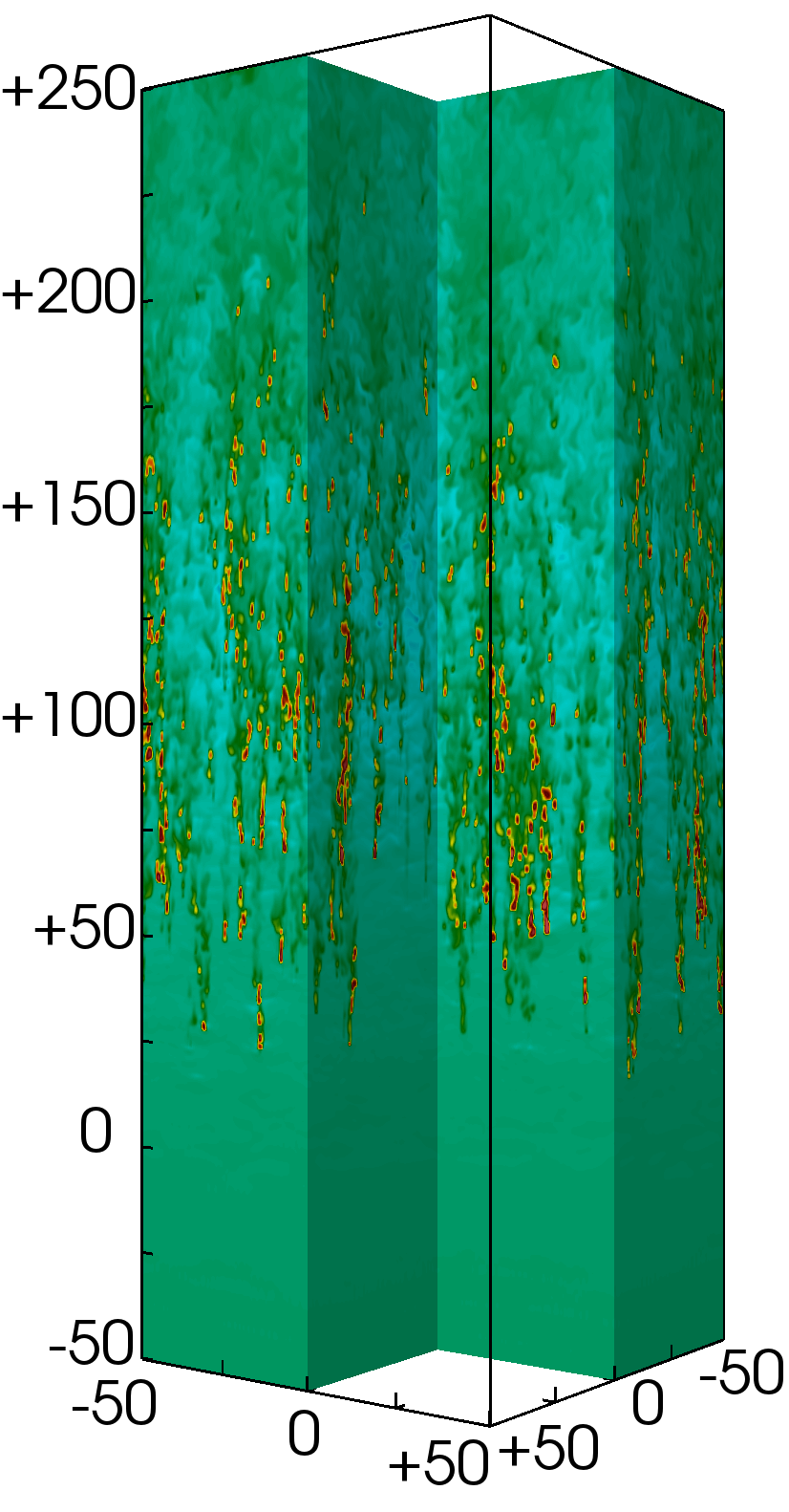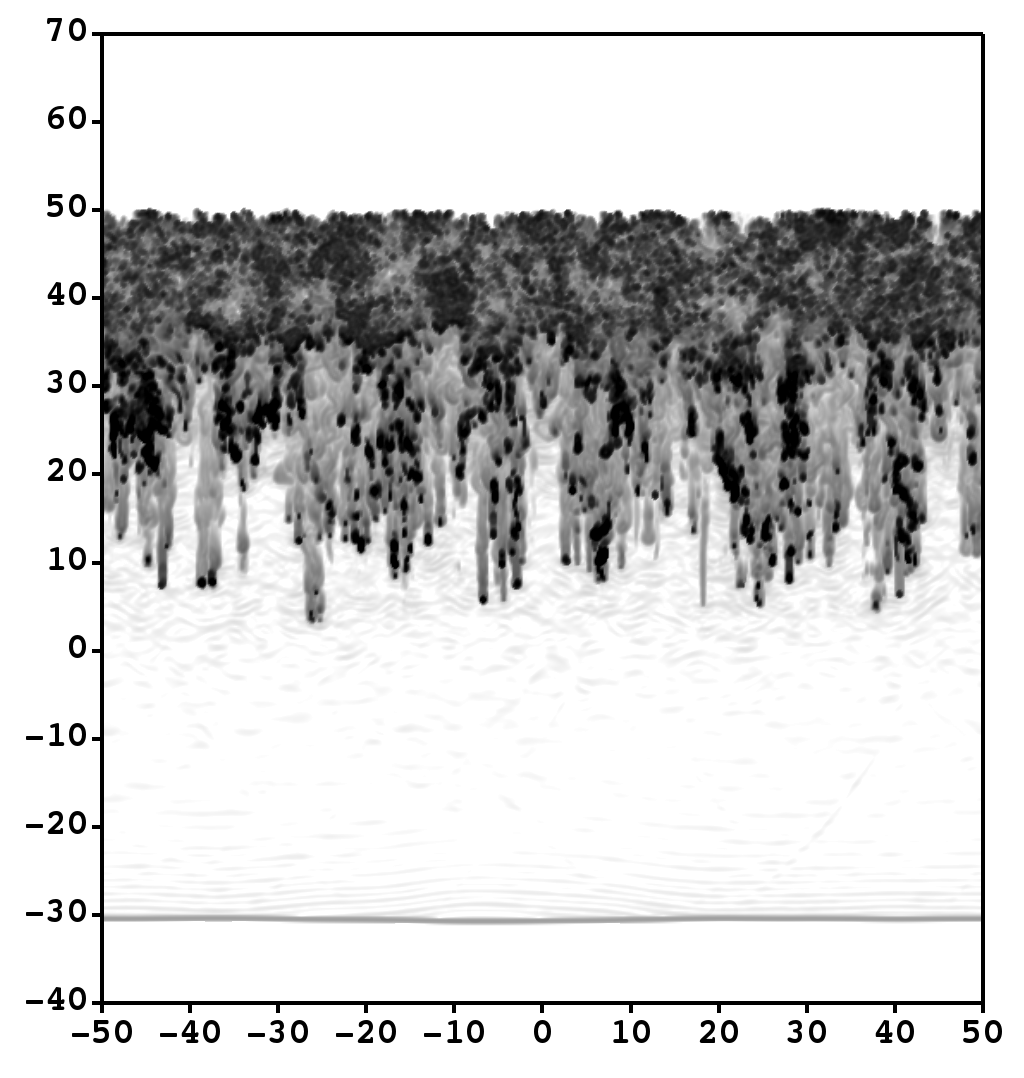Achievements & Publications
Shock-multicloud interactions in galactic outflows - II. Radiative fractal clouds and cold gas thermodynamics
Banda-Barragán, W.~E., Brüggen, M., Heesen, V., Scannapieco, E., Cottle, J., Federrath, C., & Wagner, A.~Y.
Abstract
Galactic winds are crucial to the cosmic cycle of matter, transporting material out of the dense regions of galaxies. Observations show the coexistence of different temperature phases in such winds, which is not easy to explain. We present a set of 3D shock- multicloud simulations that account for radiative heating and cooling at temperatures between 102 and 107K. The interplay between shock heating, dynamical instabilities, turbulence, and radiative heating and cooling creates a complex multiphase flow with a rain-like morphology. Cloud gas fragments and is continuously eroded, becoming efficiently mixed and mass loaded. The resulting warm mixed gas then cools down and precipitates into new dense cloudlets, which repeat the process. Thus, radiative cooling is able to sustain fast-moving dense gas by aiding condensation of gas from warm clouds and the hot wind. In the ensuing outflow, hot gas with temperatures rsim106K outruns the warm and cold phases, which reach thermal equilibrium near ≈104 and ≈102K, respectively. Although the volume filling factor of hot gas is higher in the outflow, most of the mass is concentrated in dense gas cloudlets and filaments with these temperatures. More porous multicloud layers result in more vertically extended outflows, and dense gas is more efficiently produced in more compact layers. The cold phase is not accelerated by ram pressure, but, instead, precipitates from warm and mixed gas out of thermal equilibrium. This cycle can explain the presence of high- velocity H I gas with NHI = 1019-21cm-2 and ΔvFWHM ≲ 37kms-1 in the Galactic Centre outflow.






 和 英
和 英